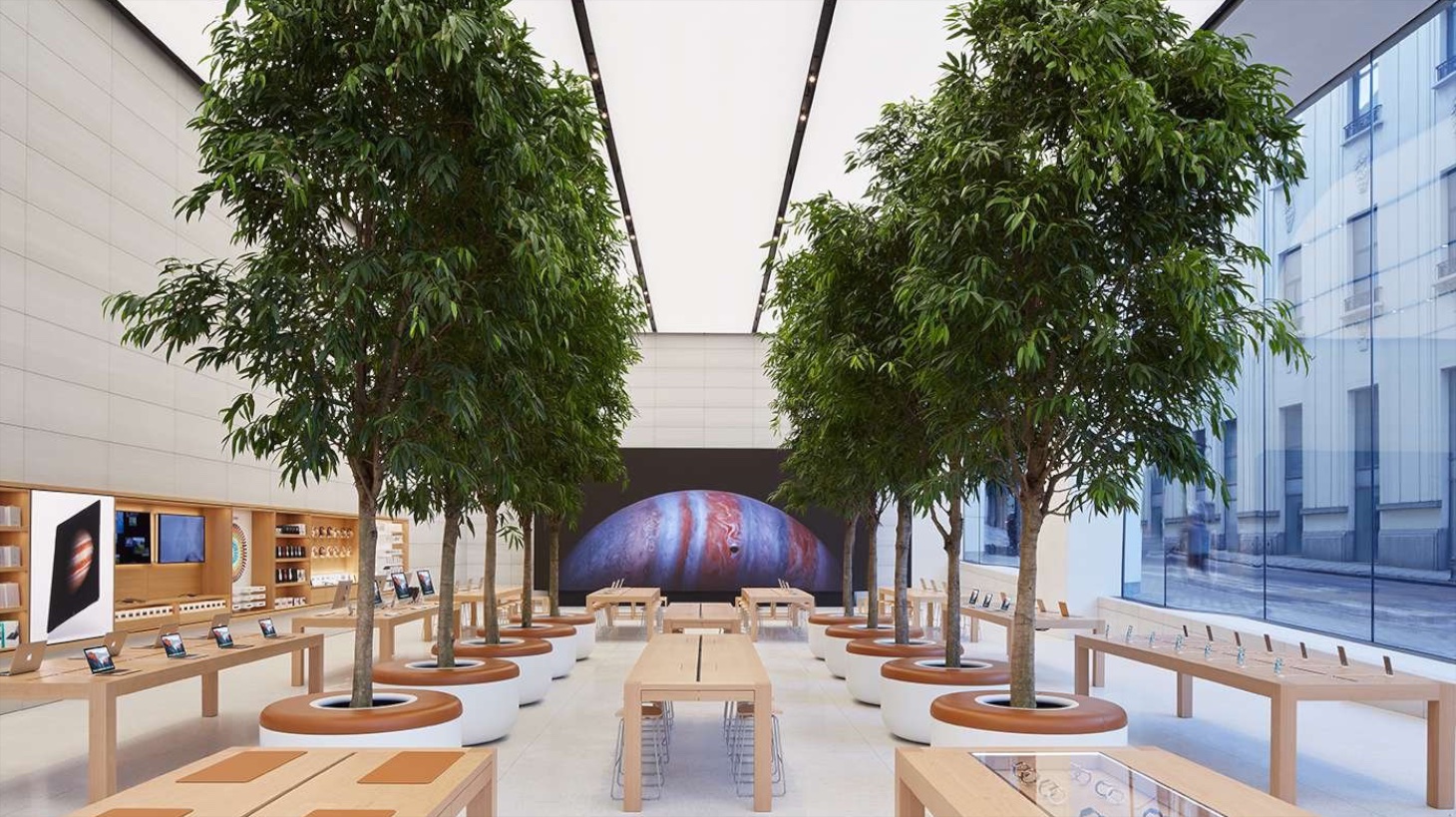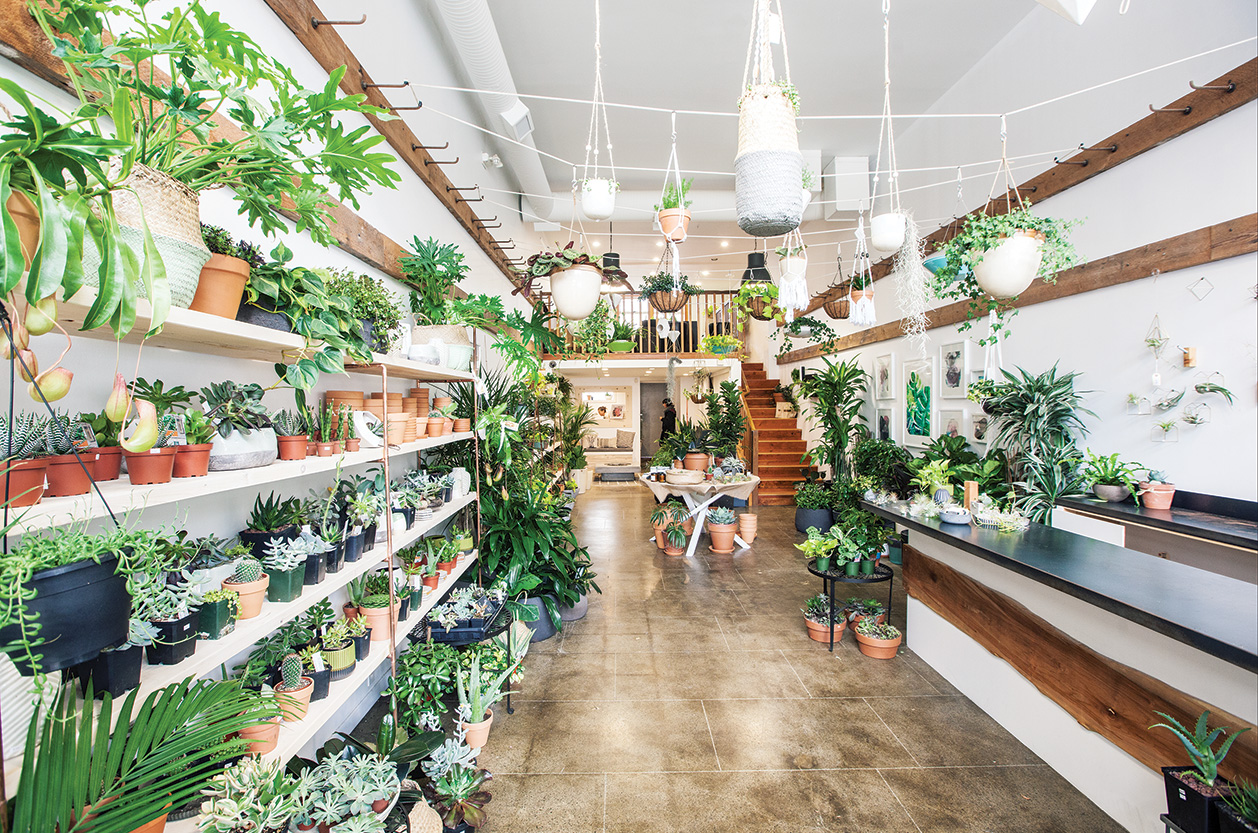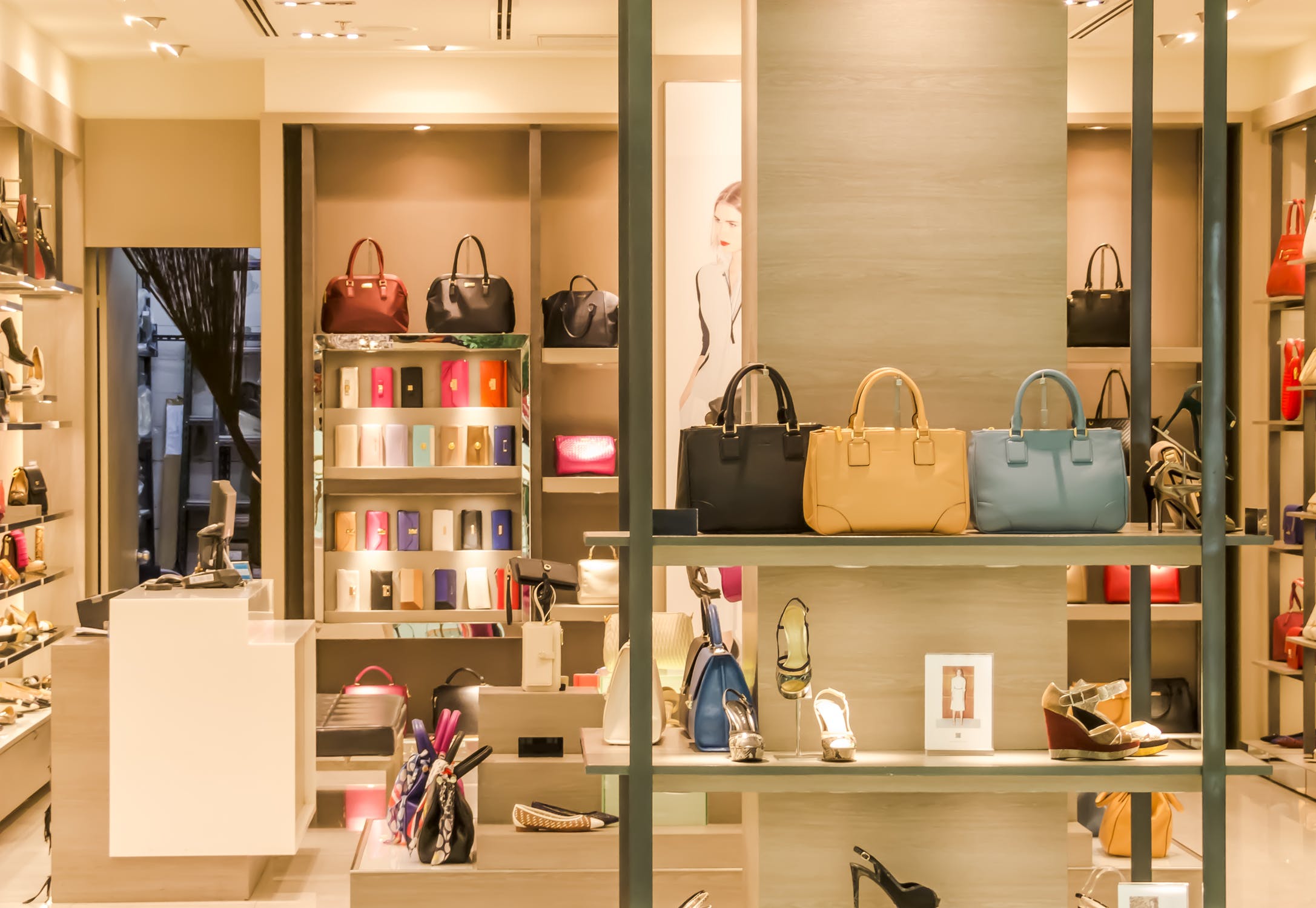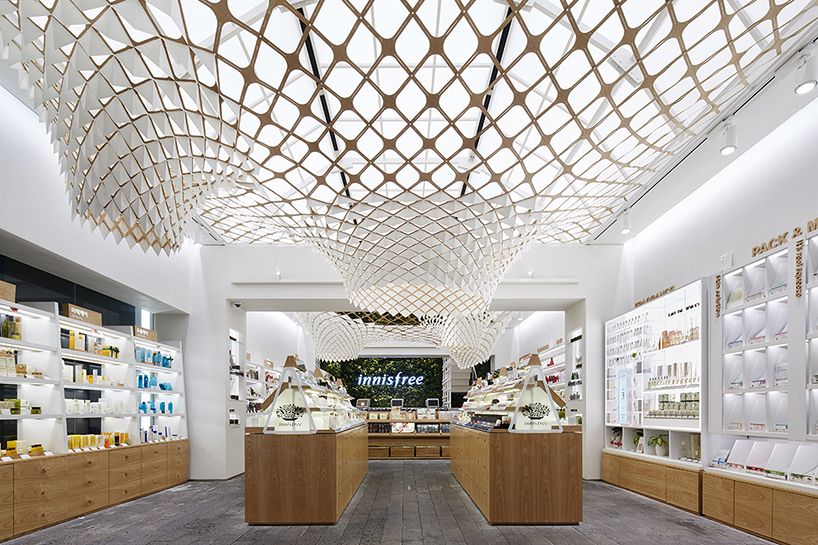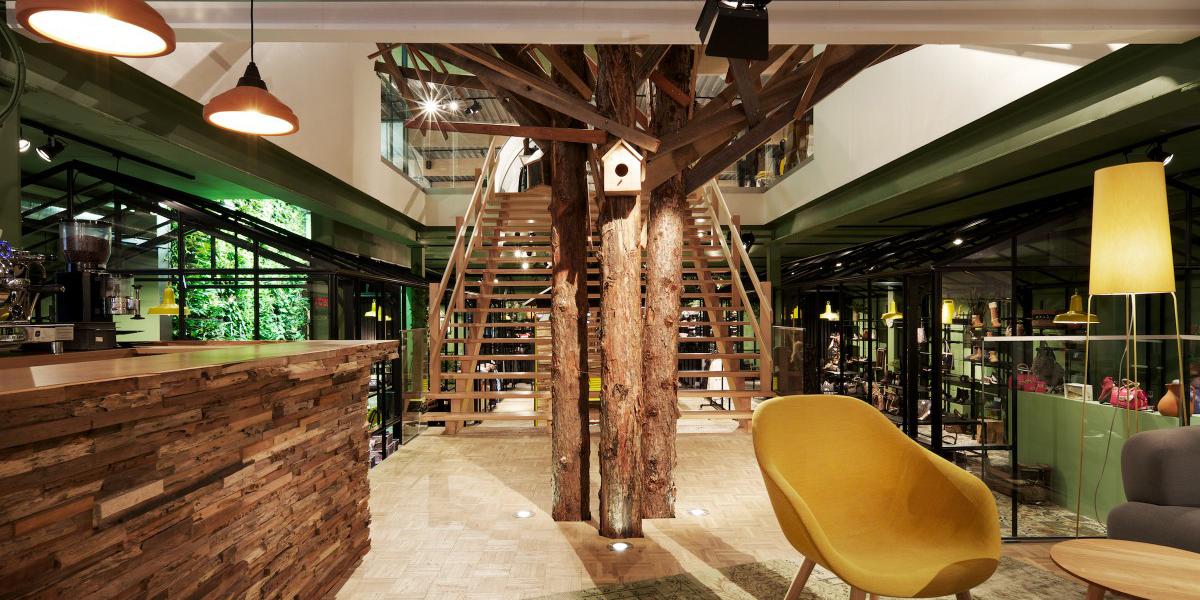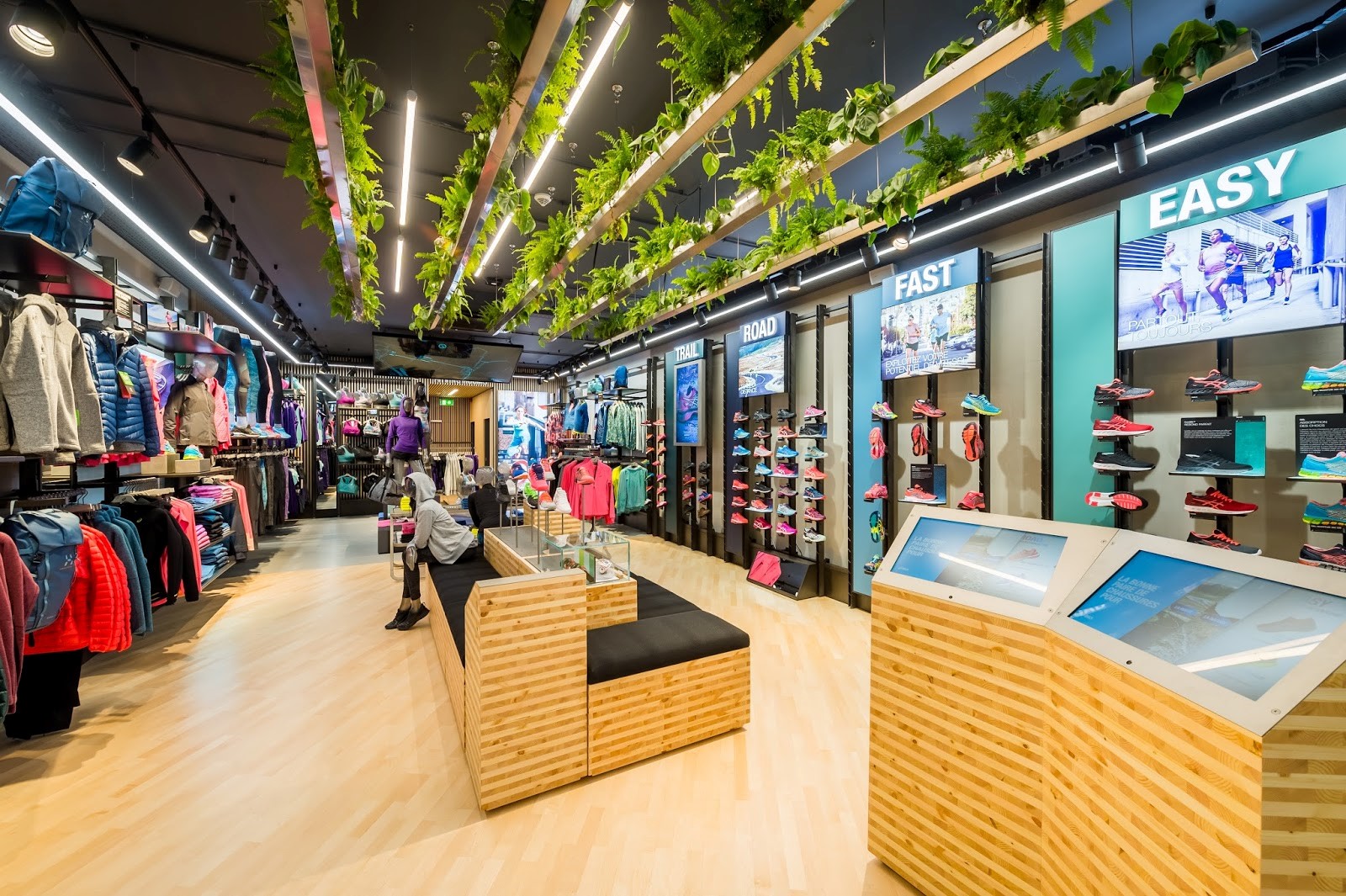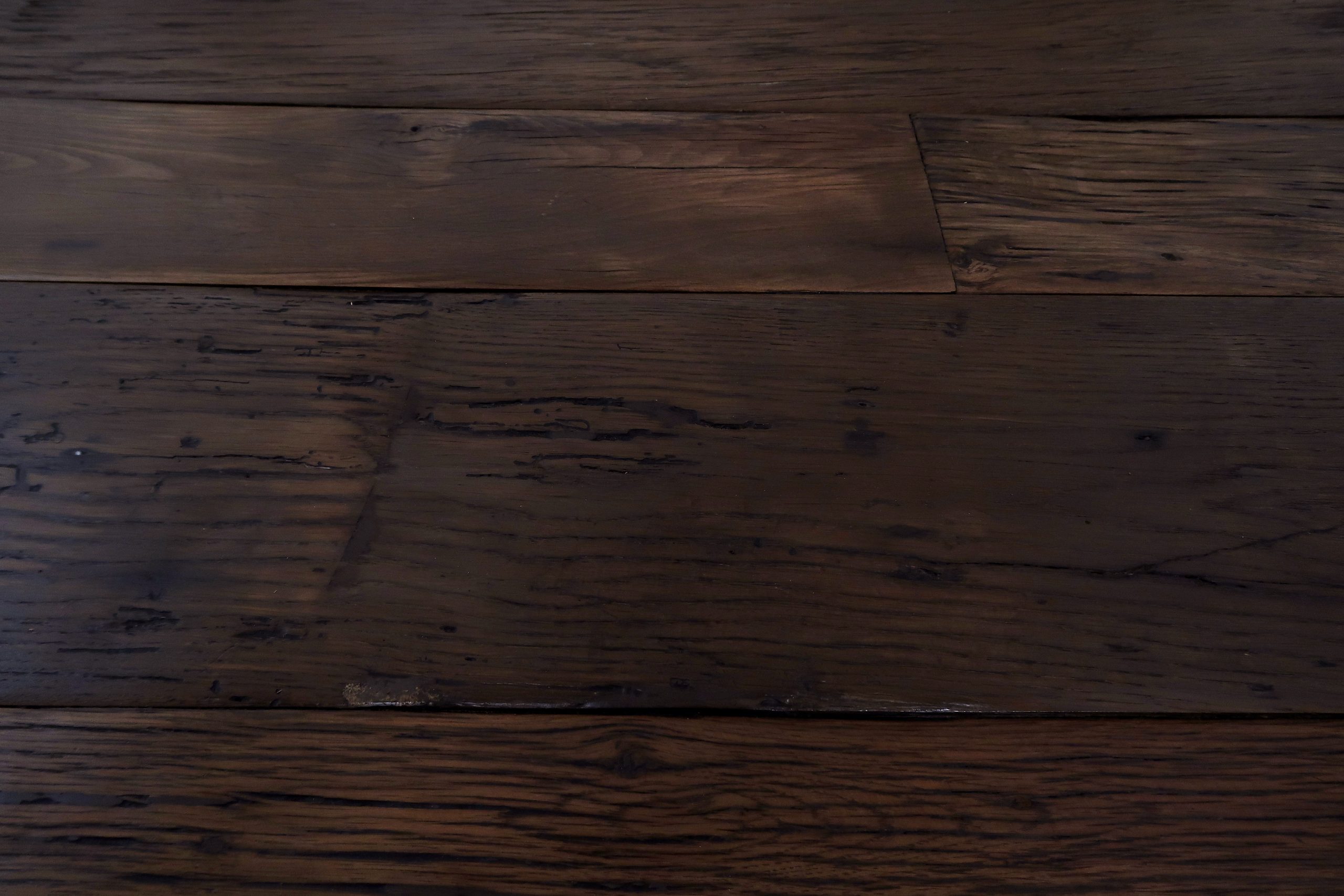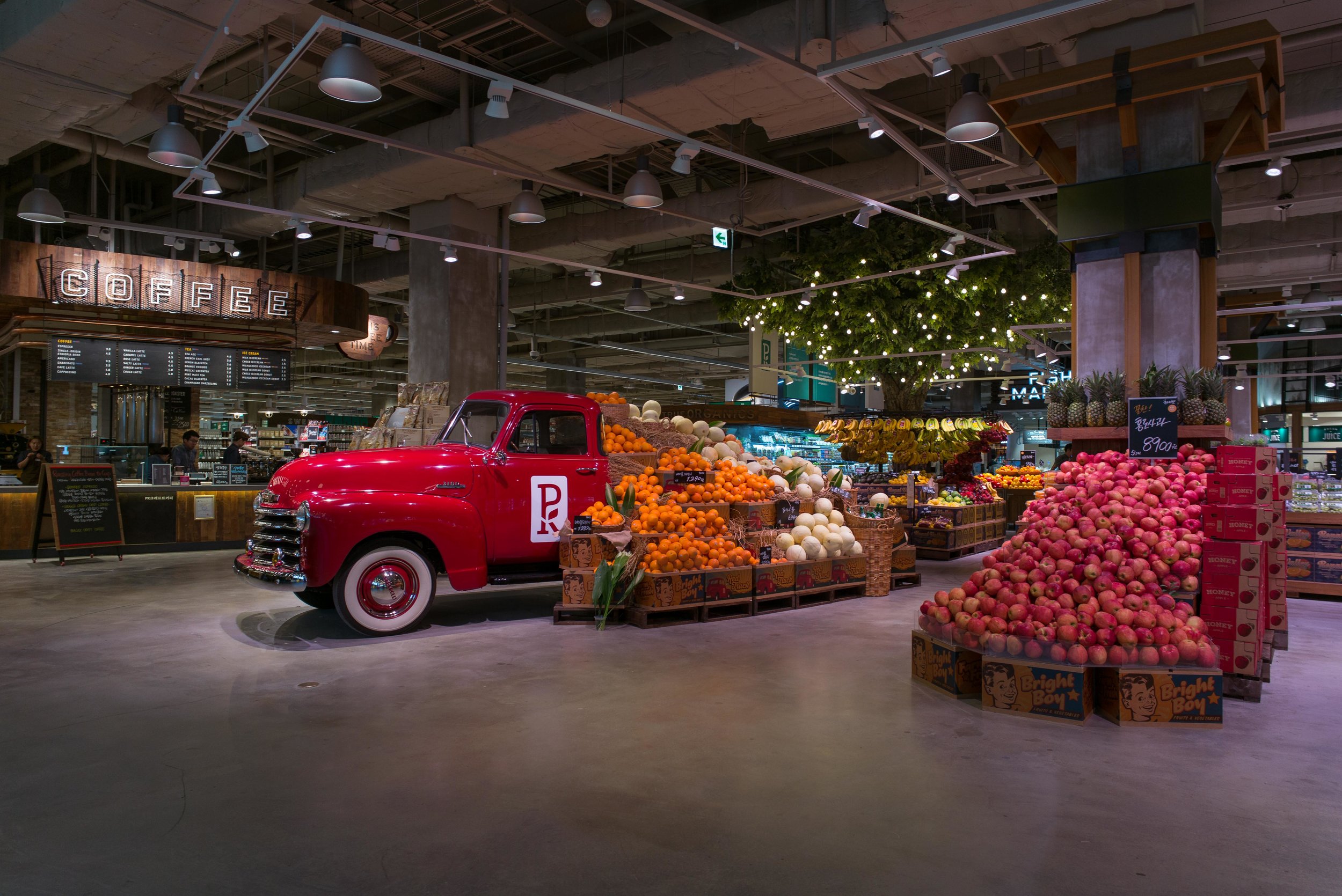
Living within a consumer society means that retail is dramatically growing.
In fact, retail covers 43% of the total value of commercial property, and a House of Commons report states that during 2014, consumers in the UK spent around a staggering £378 billion.
Today we spend more and more time in retail centres indulging in our passion for “consumerism” or “retail therapy,” hence consumer brands are looking to different ways to create more restorative, positive shopping experiences.
As it turns out, the benefits of biophilia in retail spaces are well established.
In 2016, The World Green Business Council report demonstrated that biophilic design optimises retail environments.
Because the concept connects humans to natures, in some ways, its approach to design takes the idea of sustainability to a new level.
The positive effects of daylight and greenery on consumers and staff can further be amplified by including other biophilic elements like natural wood, which has been shown to reduce stress and increase social interactions.
Wood not only improve aesthetics, but add comfort and sophistication, and all the other benefits that biophilic design brings.
By embracing the use of multiple biophilic elements; natural lighting, wood, greenery and water features, customers will feel more empowered to relax, take their time, and shop around.
These natural elements shape our everyday environment, and foster a sense of warmth, calmness and comfort.
A study entitled “Negative affect: The Dark Side of Retailing” reveals that approximately 10% of shoppers enter a store in a negative mood; which makes the act of shopping a stressful and potentially irritating one.
This can impact overall consumer spend and centre profitability.
However, by consciously altering the store atmosphere through spacial layout, lighting, temperature, product placement and integrating greenery can greatly enhance positive consumer experience.
According to a report on The Economics of Biophilia;
- The restorative and calming effect of nature helps draw shoppers into stores and creates positive emotions towards making a purchase
- Shoppers’ perceptions of the value and quality of good increases in line with the amount of greenery and vegetation within the space
- Shoppers are more likely to dwell longer within the store
- Shoppers are more likely to accept higher prices
- Store lit by daylight can see significant sales boosts of 15 – 20%
In applying the idea of biophilic design to the retail environment, the idea is centred on the inherent connection to nature in order to create spaces that are stress-free and that encourage successful shopping experiences both for the consumer and retailer.
Simply introducing greenery, especially in vertical wall applications, creates a sense of freshness and offers aesthetic appeal, filters the air and improves the acoustics within a space, which in turn reduces customer stress, irritability, and visual fatigue and increases their dwell time.
“A new breed of businesses is emerging which understands that better shopping environments lead to better experiences for consumers, which, in turn, lead to better economics for retailers,” says Terri Wills, CEO of the World Green Business Council.
Indoor plants are, of course, not the only natural elements that can be incorporated into a space; they are, however, as close as one is likely to get to nature in most indoor settings.
Natural light is an instant mood enhancer and creates an energising yet calming and inviting atmosphere.
A space that receives sufficient natural light instantly appeals to customers and increases their dwell time spent in the store.
A study conducted in a chain of 70 retail stores across California — 49 of which relied on artificial lighting, links daylight to retail sales.
The report makes it clear that there was a 40% increase in sales after the installation of skylights within these stores.
The retail store business model across Europe is also starting to capitalise on daylighting to not only increase profits but also improve customer mood.
One of the most powerful effects of daylight is its psychological effects on retail staff: improving their motivation, productivity and overall job satisfaction.
In addition, it improves the company’s’ store economically, by helping to reduce its heating and cooling costs.


